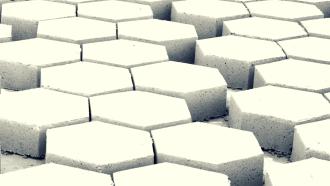Photo: Dennis CJ / Research Matters
Paper, considered a symbol of knowledge, has been used indiscriminately in the past century causing severe environmental degradation. One study estimates that with all the paper we waste each year, we can build two 12-foot high wall of paper from New Delhi to Bangalore! Electronic storage is not a better alternative since it poses another challenge of handling e-waste that is generated. Now, a collaborative study by researchers headed by Prof. Sandeep Kumar and Dr. A.R Yuvaraj at Raman Research Institute (RRI), Bangalore, and the University of Malaysia, has developed a novel technology that could reduce the use of paper and the generation of e-waste by replacing the way we present information. The researchers have developed an optical storage device made of gold nanoparticles decorated with compounds called azobenzenes.
The newly developed device stores and displays information on a substrate and also restores the substrate back to its original state, using only light. “An optical storage device is a type of display device which can store energy, through light illumination”, explains Dr. A. R. Yuvaraj from RRI. The researchers started by reducing gold chloride to form gold nano-particles. The synthesized particles were then made to react with thiolated azobenzene moieties; chemicals that attach to the gold nano-particles, to form the azobenzene coated gold nanoparticle liquid crystal, measuring just around two nanometres on average. “One of the interesting things we noted was the difference in ways the molecules of this new compound is arranged in its liquid crystal form. Gold nanoparticles are usually arranged in well-defined planes. However, once the azobenzene molecules are attached, the compound loses this arrangement, which gives it some of its unique optical properties”, he adds.
For the new compound to function as an optical storage device, further fabrication of the liquid crystal is required. “We loaded the mixture of newly formed liquid crystal and commercially available LC (5CB) on to a Liquid Crystal prototype cell, made by sandwiching two polyimide coated, unidirectional substrates, which performs as an optical storage device”, explains Dr. Yuvaraj on how the team designed the optical storage device. Information can now be written onto the cell by simply shining UV light onto the cell through a photomask - a photographic pattern that covers some areas of the cell and is transparent to others. The areas that are exposed to light undergo a process called photoisomerization, which allows for information to be stored on the cell.
Photoisomerization is a process by which some molecules undergo a structural change, when energy, in the form of light, is given to the molecules. The molecules, which are in a stable configuration, called trans state, is changed into an unstable configuration, called cis state, on illumination. This allows for information to be written on the compound using photomasks. “Instead of using pens and markers to write, we can now write using just a UV pen. Once written, on shining light of around 450nm wavelength, which falls in the visible range, we can change the compound back to the trans state, thus erasing what was written. We can write and erase just using light”, remarks Dr. Yuvaraj.
The new device allows for easy storage of information by enabling simple writing, erasing and rewriting process all using light. It could replace writing boards in schools, advertisement and display boards, newspapers, magazines and anything that uses paper to store information. By designing the device for permanent optical storage, it could even replace business and ID cards. This innovation can help reduce the stress on trees, save water used for paper production, and reduce paper waste and e-waste, thus conserving our natural resources. A clean and a green way ahead, indeed!

























